Best things to do in Manaus: complete guide from a Brazilian’s perspective
It didn’t take more than five hours for Manaus to win me over. It was the time it took me from landing at the airport to arriving at the city port at dusk. That pink sky behind the charming chaos of boats coming and going, full of giant watermelons and hundreds of bananas, made me fall instantly in love. But of course, there are many more things to do in Manaus besides a poetic sunset by the river.
As a Brazilian, I dreamt of visiting the Amazon my whole life. And I loved it so much that after going there for the first time, I went back twice in the same year.
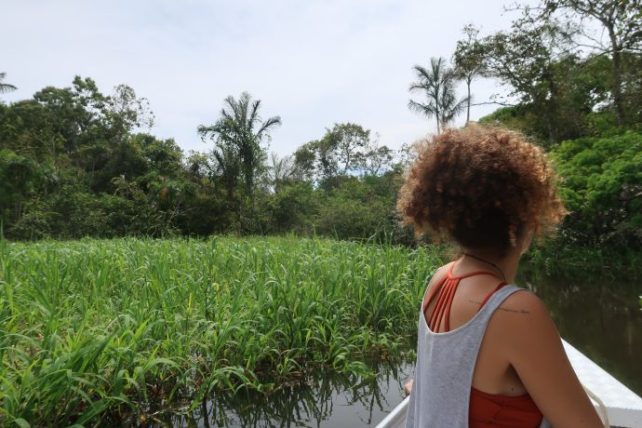
I also spent a few days at the jungle, both in a riverside indigenous community and in the great eco hotel Juma Amazon Lodge. But contrary to what some may think, the Amazonas state capital is much more than a gateway to the Amazon. In this article, I’ll share plenty of tips and recommendations so you have no doubt about that. Hopefully, you’ll fall in love with Manaus like I did.
But before we get to all the tips on what to do in Manaus, let’s get down to practical information: when to go, how long to stay and where to stay in Manaus?
Planning a trip to Manaus
When is the best time to go to Manaus?
You can go to Manaus at any time of the year. It’s always hot and humid, but luckily the destination is so interesting it makes up for it. In general, the biggest difference you’ll see throughout the year is the amount of rain and, as a result, the level of the rivers, which changes the scenery at the jungle areas.
During the rainy season and right after it, parts of the Amazon Forest get flooded and locals travel around it by boat, which is one of the best experiences to have around Manaus. On the dry season, there are less flooded forest areas and more river beaches in and around the capital, which are also very nice. Both are lovely, but quite different: if you can, go there in both seasons to compare it.
If you want to avoid heavy rains, it’s better to go to Manaus between June and November. But within that time, there are other factors to consider. The period between June and August is quite nice because it rains less, but you can still enjoy the flooded forest. Between September and November is the dry season.
From December to February, it’s usually rainy, but the water level is still low. And between March and May, the level of the rivers rises, and it rains a lot.
I went to Manaus for the first time at the beginning of June and it was perfect: it rained just a little, but the rivers were full and so beautiful!
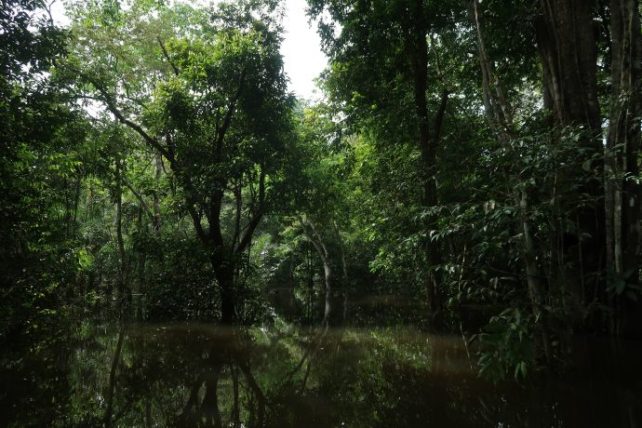
How many days should you stay in Manaus?
To see the main attractions of Manaus without running around, you’ll take about three days. With more time, you can go to more floating bars or river beaches in the city and make day trips to destinations like Presidente Figueiredo, a nearby town known as “the land of waterfalls”.
I suggest you combine the trip to Manaus with a few days in the jungle, like I did (2 to 6 days would be nice). And if you’re a fan of hiking and waterfalls, spend and about 2 to 4 days in Presidente Figueiredo.

Where to stay in Manaus?
The most convenient location to stay in Manaus is downtown. After all, most of the city’s tourist attractions are there. However, as in many large Latin cities, this region is more commercial than residential. Therefore, some areas are a bit deserted at night.
To make sure you’re in a safe area, stay as close as possible to Largo São Sebastião, where you’ll find the Teatro Amazonas (a beautiful theater that’s one of the city’s postcards).
This is the historic part of the center, which, in addition to being more charming and offering more attractions than other areas, is also safer.
That’s where I stayed in all my trips to Manaus. I always book a private room at the Local Hostel, located a five-minute walk from the Amazonas Theater and 15 minutes from the port and the Adolpho Lisboa Municipal Market, which you’ll surely visit too. I believe this is the best hostel in Manaus.
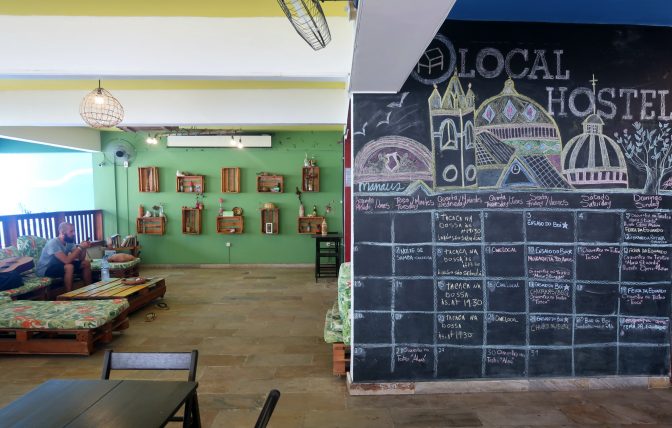
If you’re looking for a hotel in the center of Manaus, check out the Hotel Villa Amazônia, the Seringal Hotel and the beautiful Juma Ópera.
Another interesting location for accommodation in Manaus is Adrianópolis, an upscale neighborhood that has many accommodation options, but is a bit far from the main tourist attractions.
Over there you’ll find good hotels such as Quality Hotel Manaus, Blue Tree Premium and Mercure Manaus.
In the neighboring Vieiralves, you’ll also find a good variety of bars and restaurants and good hotels such as Millennium and Ibis Budget.
You might also consider doing a river cruise, such as the well known Iberostar Heritage Gran Amazon.
For more information, read my article on where to stay in Manaus, or click here to check out the prices of accommodation in Manaus for the dates of your trip and make an online reservation.
List of things to do in Manaus
And now, finally, I come to the main subject of this article: the best things do in Manaus. I’ll first make a list of the things I loved doing there and recommendations I got but didn’t get to try myself. Then I’ll give more details about the main attractions in Manaus from my real experience and also recommend a few things you should eat there – the Amazonian flavors are amazing, and different than what you’ll find in the rest of Brazil.
Finally, I’ll suggest an itinerary for a three-day trip to Manaus.
My favorite attractions in Manaus
- Perreché Downtown Tour with Uika
- Go on a tour of the Teatro Amazonas
- Visit the Manaus Moderna market
- Drink a couple of beers at Bar do Armando
- Boat trip to the “meeting of the waters” and the Janauari reserve
- See the sunset at the Abaré floating bar
- Explore the Botanical Garden MUSA – Museum of the Amazon
- See a free concert at Teatro Amazonas
- Visit the coffee shop-cinema-bar Casarão de Ideias
- Check out the free exhibitions at Galeria do Largo

Other cool things to do in Manaus
- Visit Seringal Museum
- Chill at Ponta Negra beach
- Hang out at the bar and cultural space Curupira
- Visit the Provincial Palace
- Go to Praia da Lua and Praia Dourada
- Have breakfast at Café Regional Priscila
What you should NOT do in Manaus
Do not take the tour to swim with pink river dolphins (botos cor de rosa). Most tour agencies offer this “attraction”, usually on a day trip combined with the famous “meeting of the waters”. However, I learned from the NGO World Animal Protection that this tour is very harmful for the animals.
Even though they are in their natural habitat, they are attracted by the guides with fish, to make sure they’re there for the tourists to see. And this has very bad impacts on their well-being. I also recommend avoiding other tours that promote interaction with wild animals in the Amazon (or anywhere else), such as taking photos with sloths.
Top Things to do in Manaus: a complete guide
Walk around the historical center
The rivers and the forest around the Amazonas capital are very important for the city. Therefore, most of the tours in Manaus and surroundings involve these two elements. But that doesn’t mean you should leave out the urban environment. Set aside at least half a day to explore the center of Manaus, which tells a lot about local history.
You can simply go walking around by yourself and look for the places I’ll mention below, or you can join the Perreché Tour, a guided tour promoted by the Uika agency. Lasting over four hours, the tour covers some of the main sights in the center and includes a good dose of history, but also touches on the lifestyle of the residents.
But if you prefer to get around on your own, keep reading to see my suggested itinerary with the main points to visit there.
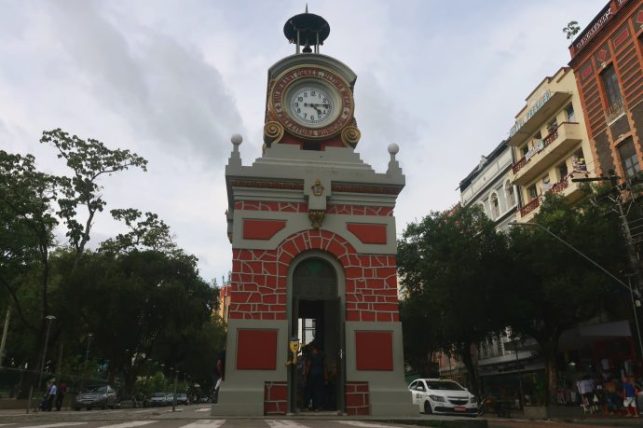

Largo São Sebastião
I suggest starting the day at Largo de São Sebastião. In this square, you’ll find the Monument to the Opening of the Ports, the great Tambaqui de Banda restaurant, handicraft stores, art galleries, an ice cream shop, the well-known Bar do Armando, the food stall Tacacá da Gisela and the famous Amazon Theater (Teatro Amazonas).
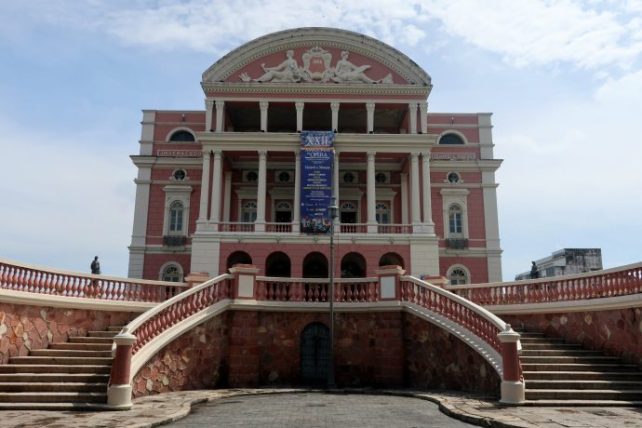
Depending on the time, you can take one of the guided tours of Teatro Amazonas, which usually start every half hour and last about two hours. The ticket costs around R$ 20 (full price) but check the updated prices and opening hours before going. Oh, and take the opportunity to also check the schedule of events, as there are usually free presentations there – I went to an awesome blues concert.
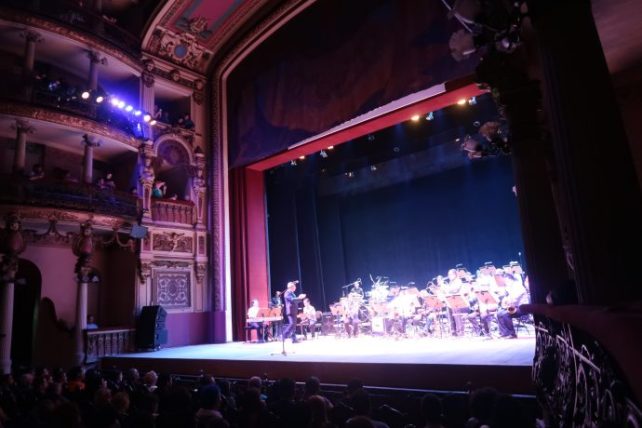
It is also worth visiting the Casa das Artes gallery, which hosts free exhibitions. Another tip is to look at the handicrafts for sale at the shop Musa do Largo or going to the café at the back. If hunger strikes, eat at the excellent Tambaqui de Banda restaurant.
You can also stop by the Largo at another time to visit the Galeria do Largo, which houses several free exhibitions, but is currently only open from 3 pm to 9 pm. Also take the opportunity to try Gisela’s Tacacá, which opens at 4 pm, and then have a beer at Bar do Armando, opposite the square.
From there, go down Rua Barroso (which used to be the most bohemian street in town, with lots of bars) and stop by Casarão de Ideias. In this cultural space, there is a café, a mini art cinema and a bar at the top.
From there, in less than 10 minutes you arrive at the Cathedral of Manaus, also known as Igreja Matriz. There you’ll also find the Municipal Clock and some nice colorful buildings.
Municipal Market, Manaus Moderna market and Port of Manaus
A 10-minute walk takes you to the Adolpho Lisboa Municipal Market, one of the main tourist attractions in Manaus. There you can find local food products that are totally worth trying, such as tucupi and jambu, cassava flour and a lot of indigenous handicrafts. I found it a bit too touristy, but interesting.
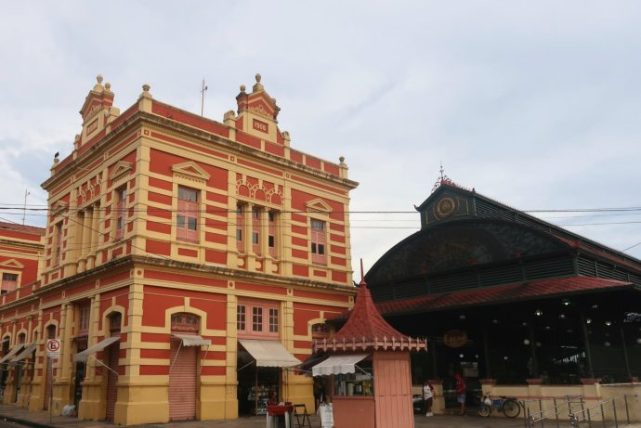
At the back of the market is the port, which I mentioned at the beginning of this article. But before going there, I suggest stopping at one of the gazebo-shaped kiosks and tasting the famous X-caboquinho, a local sandwich, or one of the freshwater fish typical of Manaus.
Next to Adolpho Lisboa is also the Manaus Moderna market. This covered market sells fish, meat, fruits, vegetables, etc. This isn’t touristy at all, but I recommend taking a walk around there to seesome of the city’s daily life and discover several fruits that you probably don’t know.

If you’ve done the route in the order I suggested, chances are you’ll arrive at the port around sunset. The place is quite chaotic, with boats and food shipments coming and going, but it was one of my favorite parts of Manaus.
The river and the port are very important for Manaus, both from a historical point of view and in the daily lives of locals. And at the end of the afternoon, the sky tends to turn pink and very beautiful, giving a poetic tone to the scene.
Guided tour of the Amazon Theater
Remember the guided tour of Teatro Amazonas that I mentioned above? This tour appears on all lists of things to do in Manaus, and it sure deserves it. After all, the theater is the city’s icon and the greatest symbol of the period when Manaus was considered “the Paris of the Tropics”.
Inaugurated in 1896, the Teatro Amazonas stands out for its large size, pink walls and eccentric yellow-green dome. But it’s even more interesting inside, especially with the curiosities told in the guided tours that take place every half hour.
I learned, for example, that the theater has elements of neoclassical, rococo, and art nouveau styles and has 701 seats on three floors. At the time, the seats next to the stage were the most expensive, because people wanted to be seen. Today, they are the least “valuable” since they get a bad view of the stage.
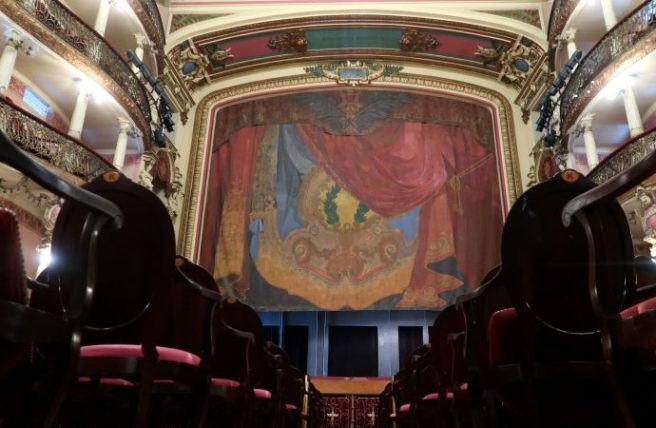
Tickets for the tour can be purchased at the theater box office, but it’s good to check the times of the tours offered in English beforehand.
Taking the guided tour or not, I highly recommend going back there on another occasion to watch a show. As I mentioned above, they host a lot of eclectic events, most of which are free. In May, the theater hosts the prestigious Amazonas Opera Festival.
Meeting of the Waters
Another popular tour in Manaus is the so-called “meeting of the waters”. That it is nothing more than a short boat ride to the point where the Solimões and Negro rivers meet, outside the urban area. Okay, but why do so many people go see two rivers meet? Because an interesting phenomenon happens there: the waters of each river barely mix.
While Solimões has muddy water, Negro is dark. The differences in density, speed, and temperature of the waters of each one makes the contrast between them remain visible, and it’s quite impressive to see.
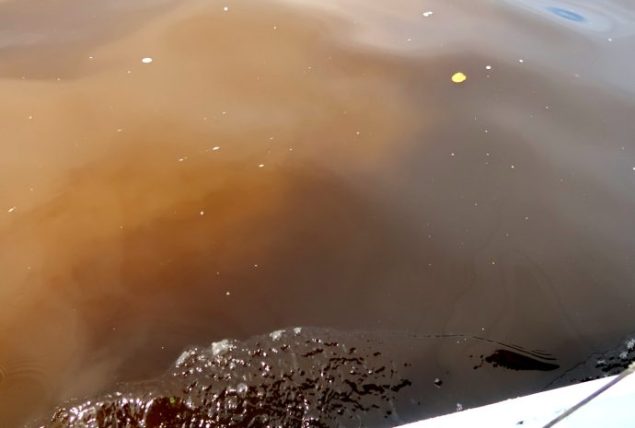
When I researched the best things to do in Manaus, most sites said to take a day tour offered by tour agencies, but as I mentioned before, that usually includes a stop to swim with the pink river dolphins – which, as I said, is bad for the animals.
Another option is to go to Porto da Ceasa, 12 km from the Centre, and look for the Cooperativa Solinegro. The pilots of the speedboats that are part of this cooperative are residents of riverside communities authorized by the Ministry of Tourism to take tourists around the area.
Fortunately, while I was in Manaus I discovered an alternative that was even easier: hiring a boatman at the downtown port. A girl I met at the hostel pointed me to the services of Seu Severino, who has a “voadeira” (small motorboat) and does this tour. I really liked his work, so I asked permission to disclose the contact here: +55 (92) 99105-1883.
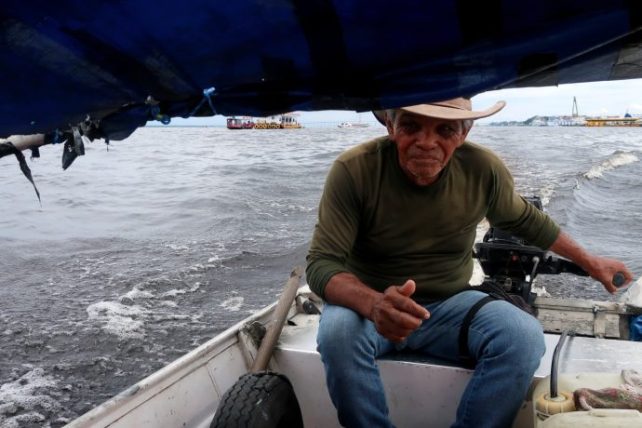
It was great because the downtown port was much closer to the hostel. Besides, we had the boat just for us and could determine the time of each stop. The only issue is that from a taller boat it’s easier to see the contrast between the waters.
From what I researched, the short trip to the Encontro das Águas from Ceasa lasts between 45 and 60 minutes and usually costs around R$100 for up to four people.

Janauari Park
Another option is to take a tour that lasts about four hours and combines the Meeting of the Waters with a trip to Janauari Park, where you can see water lilies and have lunch at a floating restaurant. Leaving Ceasa, this tour usually costs R$200 to R$300 for up to four people.
At first, we were just going to see the meeting of waters, but we ended up asking Seu Severino to take us to Janauari Park. We were two people and we paid him R$150 in all.
Janauari Park is about an hour by boat from Manaus. On the way, we saw cute riverside houses and passed by flooded forest regions, which I love!
When we got there, Seu Severino parked the boat next to Valdeci’s floating restaurant, which is at the entrance to the reserve. Next to the restaurant is an indigenous handicraft shed with lots of cool stuff. And after that, a wooden walkway that goes through the middle of the forest.
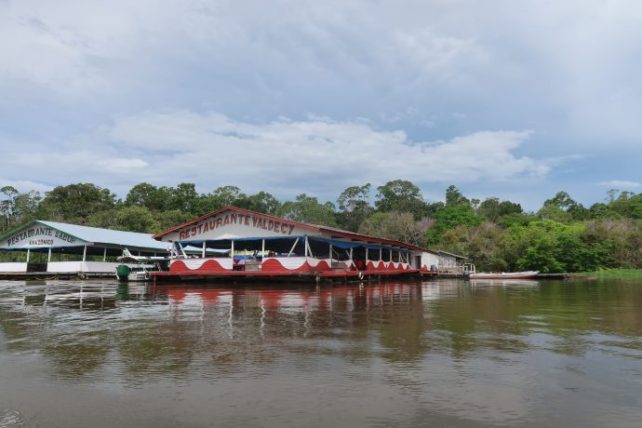
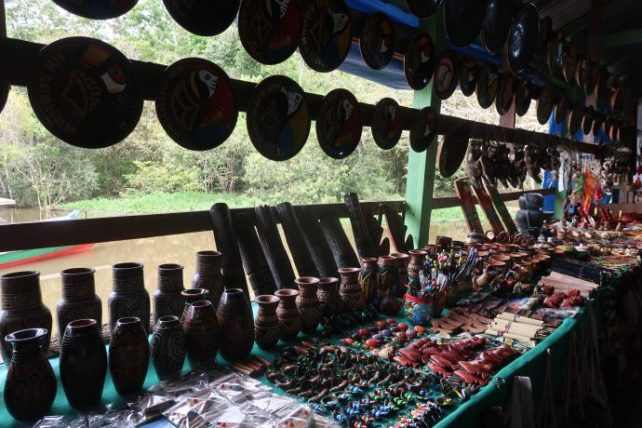
The walkway is short, but very nice. We managed to hear monkeys, but we didn’t see any – I believe it was bad luck, because I was told that it is quite common to see them. But as the sign below says, even if you are as unlucky as me, don’t try to lure them with food.
In the dry season, you can walk to a huge and elderly Samaúma, a very beautiful Amazonian tree. During the flooded season, when I was there, the path is under water, and you can only see the tree from afar.
At the end of the walkway, you arrive at a lake with water lilies. We saw a baby alligator lying on top of one, as well as many beautiful birds.
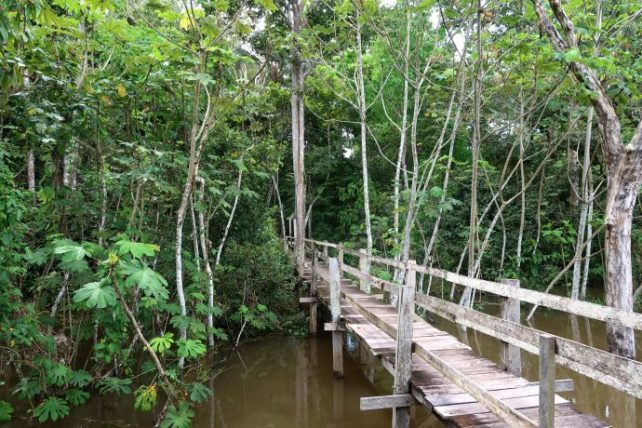
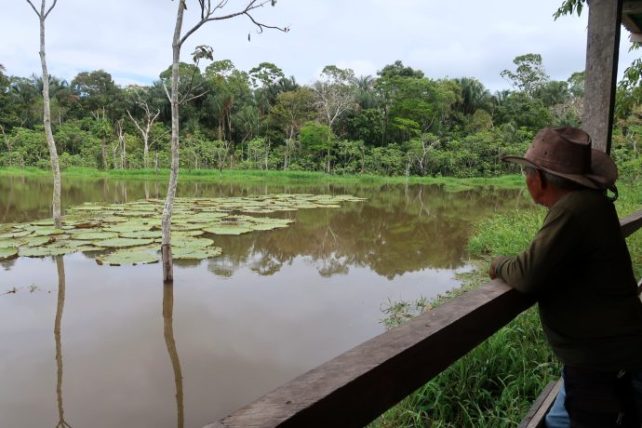
On our way out, we stoped at the floating restaurant to grab a couple of beers. We weren’t hungry, but they have an all-you-can-eat buffet that seemed good. And while I was sitting there thinking about how grateful I was for the privilege of being there, the day got even better: several dolphins started jumping into the water in front of us. It’s amazing to see them free like this! I didn’t even get the camera because watching them was cool enough.
After the Janauari Park, we passed through more beautiful stretches of flooded forest and visited an indigenous tribe. They are from the Tuyuka ethnic group and make a living selling handicrafts and performing for tourists. They charged R$50 to stage a ritual, but we were happy to buy bracelets made by them.
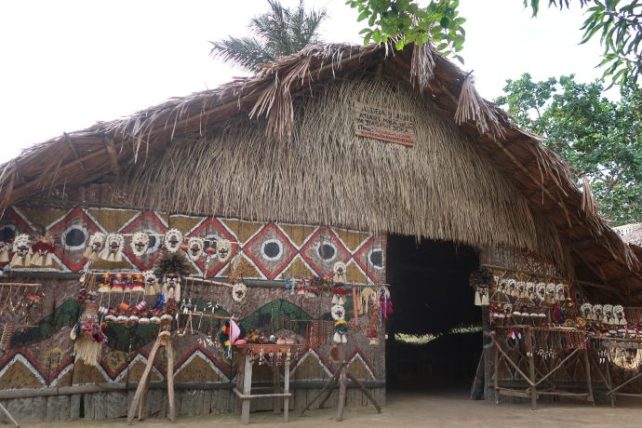
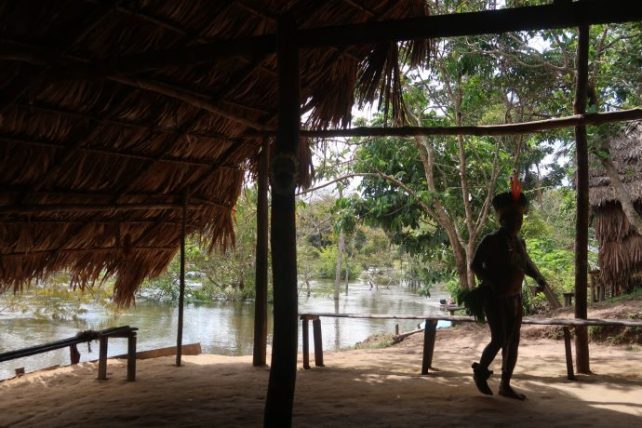
Abaré SUP & Food
On the same day as the tour with Seu Severino, we went to Abaré SUP & Food, a floating bar located about 40 minutes by car from the center of Manaus. We took an Uber to the entrance (following the signs, because the GPS didn’t point out the exact place). There, a boat from the bar takes you to it for a small fee.
I didn’t like the music in the bar; it was super loud national rock, which for me didn’t have much to do with the quiet atmosphere of the place. Still, I found the atmosphere really nice.
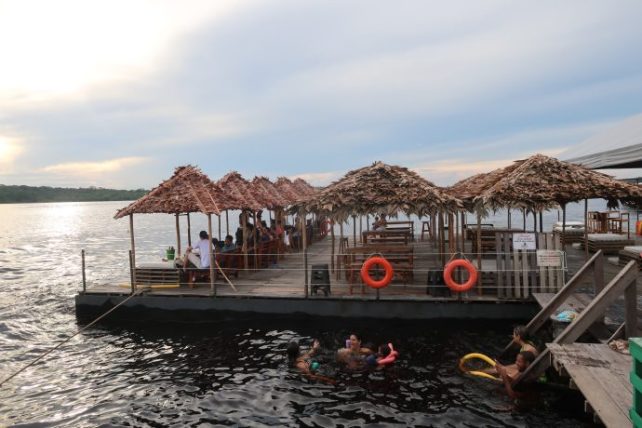
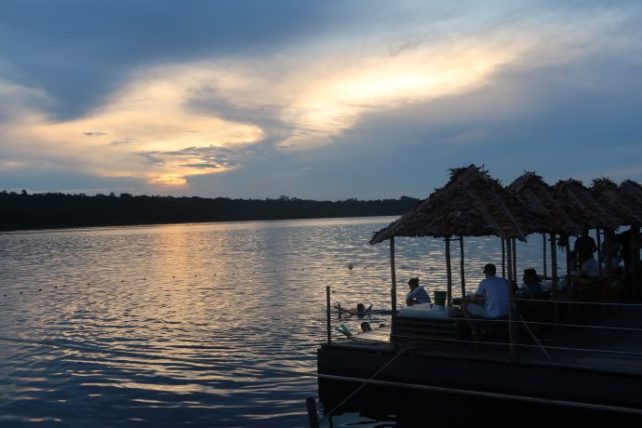
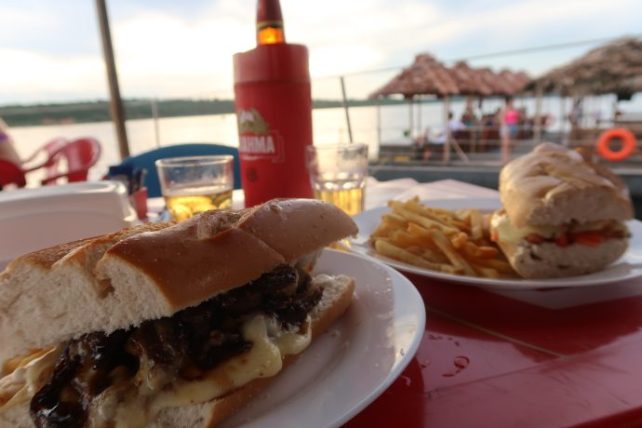
You can safely bathe in the river, and they provide buoys. There is also a changing room. And as the name of the place indicates, you can do SUP (stand up paddling) there.
We had sandwiches and beers. My favorite part, however, was watching the late afternoon turn the sky orange over the water. The photo doesn’t do it justice!
I loved going there, but you might have some trouble returning to the city center, because the place is a bit isolated. Taxi is very expensive, and it is difficult to get an Uber.
MUSA: Museum of the Amazon
On my last day in Manaus, I went to say goodbye to the Amazon rainforest by visiting the MUSA – Museu da Amazônia botanical garden. The space is in the Adolpho Ducke Forest Reserve, and it is impressive to see such a great amount and variety of trees without leaving the city. It takes about 30 to 40 minutes to get there by car from the center, or about an hour by bus.
The MUSA includes an area with orchids and bromeliads, a somewhat neglected exhibition on reptiles, a lake of water lilies, a butterfly garden… And the highlight is an observation tower 42 meters high.
Climbing to the top of the metal tower is less strenuous than I expected. And it’s so worth it! On one side you see endless trees and on the other you see many trees with the buildings on the horizon. Upstairs, there are benches to sit on while you enjoy the view.
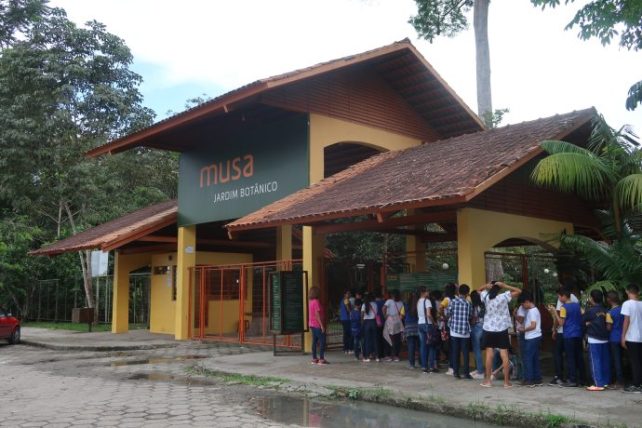
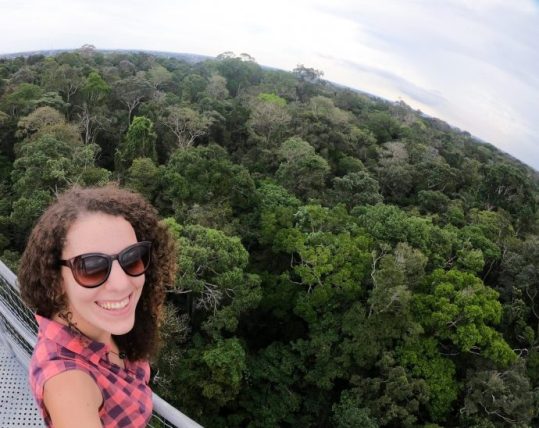
Things to do in Manaus: what to eat
Even for Brazilians, there are many typical dishes from the Amazon region that are unknown and absolutely amazing. If you’re going there for the first time, be sure to try anything locals recommend to you, especially local fruits and fish that you’re probably not going to find in other parts of the country. I must confess that eating was one of my favorite things to do in Manaus!
Here are some of the most typical things to try during your trip:
X Caboquinho
This traditional Manauara sandwich is filled with coalho cheese and tucumã, and often includes plantain. I ate it on French bread and thought it was delicious, but they also have tapioca with the same stuffing.
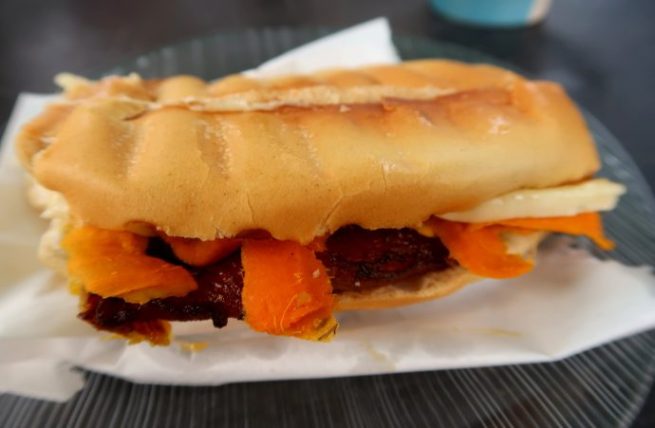
Tambaqui, Pirarucu and Tucunaré
Tambaqui is one of the best-known Amazonian fish and one of the most popular places to try it is the Tambaqui de Banda restaurant. Located in Largo São Sebastião, it has outside tables right in front of the Teatro Amazonas. Pirarucu is another very famous fish there, known as “the cod of the Amazon”. It is also worth trying another fish called Tucunaré.
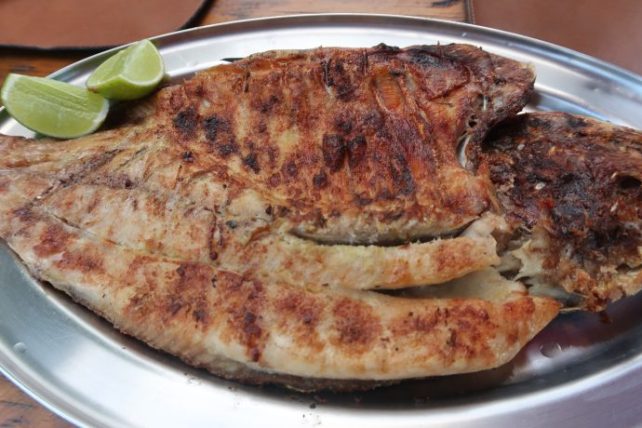
Jambu
Jambu, or jamburana, is a typical plant from the North region of Brazil. The leaves and flowers of this herb give a tingling sensation on the lips and tongue.
You can either buy a piece at the Municipal Market to chew and see the effect, or order one of the many dishes made with this ingredient. But for me, the best thing is to try the jambu cachaça and the caipirinha made with it. I had the drink at the Tambaqui de Banda and I loved it – and I don’t even like cachaça.
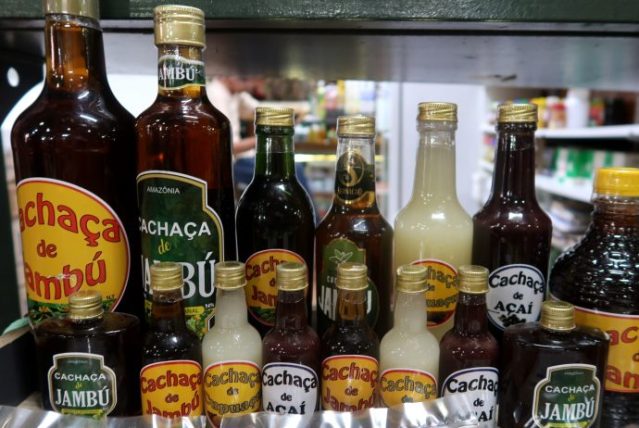
Açaí
Made from an Amazonian palm tree, açaí has conquered the world. While in the rest of Brazil and in other countries it is mostly consumed as a cream and mixed with ingredients such as banana, guarana syrup and granola, in the Amazon the custom is different.
Over there, people eat açaí pulp with cassava flour, shrimp or grilled fish. Take advantage of your trip to Manaus to experience the real açaí! I kept putting it off and ended up not tasting it, but I was told well about the açaí from Waku Sese.
Tacacá
Present in most of the Amazon region, tacacá is sort of like a soup made with tucupi broth, which is produced from wild cassava roots. Usually served in a bowl, the broth also contains jambu, dried shrimp and cassava gum.
I tasted the Tacacá da Gisela, which is located in Largo de São Sebastião and is probably the most famous in Manaus. A lot of people don’t like the taste of Tacacá, which is a little bitter, but I even found it interesting. I just wish I had ordered it without the gum, which has a weird gooey appearance I didn’t like.
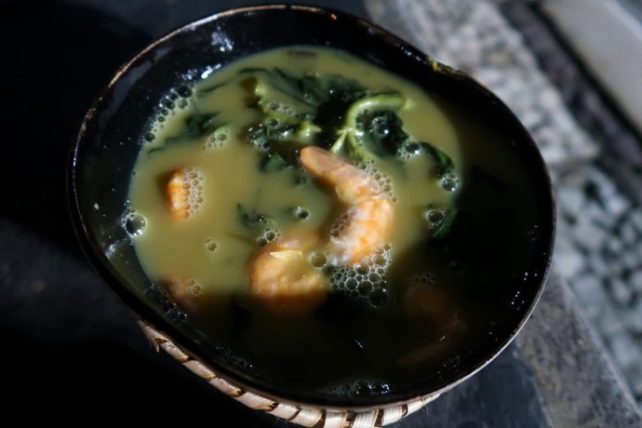
Ice cream
The Amazon is full of flavors that are not so easily found in other parts of Brazil, and that includes many local fruits. I recommend going to Glacial, a very traditional ice cream shop in Manaus. It’s self-service (by weight), which is excellent for those who want to try new flavors.
I recommend trying cupuaçu, açaí, tapioca, tucumã and Brazil nuts. There are other more modern and perhaps even tastier ice cream parlors, but locals recommended me this one and I love these traditional places.
Itinerary in Manaus
I recommend you stay a bit longer if you can, but you can see and do a lot in three full days in Manaus (not counting the arrival and departure days). Here’s my suggested itinerary:
Day 1: Visit to Teatro Amazonas, have lunch at Tambaqui de Banda, walk around the Center (or do the Perreché Tour with Uika), have an ice cream made from local fruits at Glacial, visit the Municipal Market and Feira Manaus Moderna, go see the sunset at the port, then return to Largo São Sebastião to eat Tacacá and visit the Largo Gallery.
Day 2: Take a boat trip to the Meeting of the Waters and Janauari Park and go see the sunset at the floating bar Abaré SUP & Food.
Day 3: Visit MUSA (Amazon Museum), go to the Seringal Museum and go check out a floating bar or river beach.
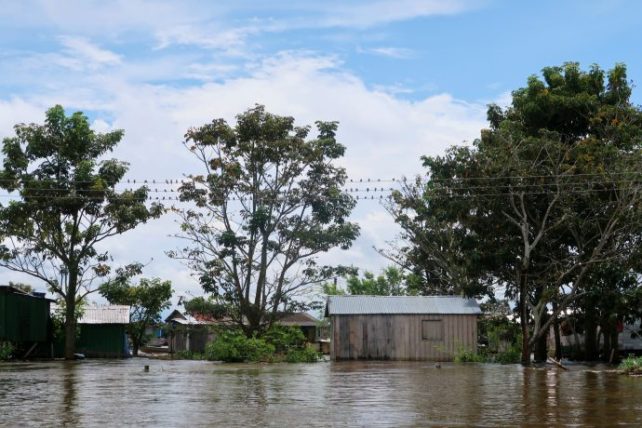
I hope this guide to the top things to do in Manaus was helpful! If you have any questions, let me know in the comments section.



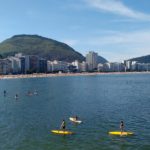






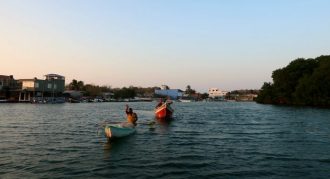





0 Comentários